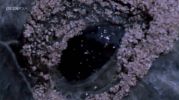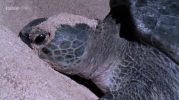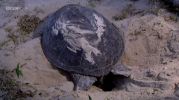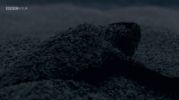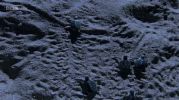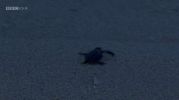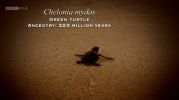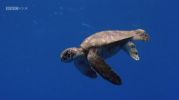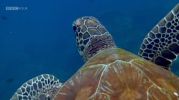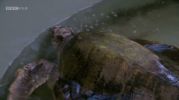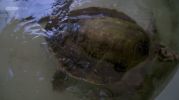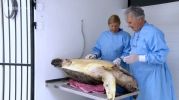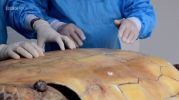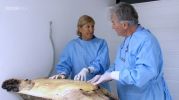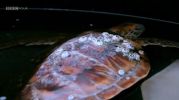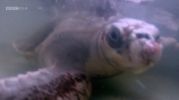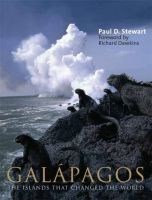 Tytuł: Galapagos: The Islands That Changed the World
Tytuł: Galapagos: The Islands That Changed the World
Autor(zy): Paul D. Stewart
Rok wydania: 2006
Wydawnictwo: BBC BOOKS
Dlaczego w bazie: Książkowe uzupełnienie serii Galapagos, także wydanej w 2006 roku. Wyspy te są nierozerwalnie związane z żółwiami, także i w tej książce jest więc mega dużo fragmentów z nimi (w tym z samotnym Georgem). Są spore kawałki skupione na nich bezpośrednio i masa pomniejszych wzmianek! Pokazujemy tylko wybrane, oczywiście! I małe, ale wszystkie grafiki z żółwiami.
Pierwszy fragment wspomina o losie zebranych przez Darwina żółwi:
He muddled his finches (and the Beagle’s crew ate the adult tortoises) and Darwin later had to rely on the finches that FitzRoy and Covington took home, in order to reconstruct the Darwinian take-home message.
Malowniczy opis-porównanie:
Far out in the quiet Pacific, the low-domed backs of massive shield volcanoes rise from the depths. Here and there they break the surface as islands. Across great spans of time these islands have wandered, like so many giant tortoises bathing in a pool.
Wzmianka o ewolucji:
So via the process immortalized by Darwin as evolution through natural selection, a unique assemblage of fauna and flora became, to our eyes, stranger still. Tortoises survived as giants. Iguanas took to the sea to feed on algae.
Fragment o zalewaniu wysp:
Indeed the possibility that tidal waves periodically sweep this archipelago as a result of collapses and sea eruptions is an interesting one. They would undoubtedly result in many animals such as tortoises and iguanas being swept into the seas and perhaps to other islands.
Wzmianka o tym skąd się na Galapagos wzieły zwierzęta:
Sea and air have also brought a very unusual mix of animal life to the shores of Galapagos. Strong swimmers, like sea lions, fur seals, penguins and green turtles, and good fliers, such as albatrosses, shearwaters and tropicbirds, have made their own way here, helped by the currents and prevailing winds, from a range of different locations.
Solidny żółwi fagment:
Giant tortoises, on the back of which the archipelago earned its famous name (see CHAPTER 2), are among the largest of their kind in the world, weighing up to 250 kg. So how did the ancestors of these iconic animals get here and from where did they come? This has long been debated, as have the systematic relationships of these tortoises, ever since Darwin’s visit over 150 years ago. Most believe the first tortoise colonists arrived in Galapagos by rafting in on vegetation from South America, already with a helpful predisposition to gigantism. Evidence to support the latter part of this theory has been found in the Seychelles, where giant tortoises have colonized at least three times. Giant tortoise fossils are also known from mainland South America.
America, scientists have discovered that the closest living relative is Geochelone chilensis, or Chaco tortoise, which lives in dry lowland habitats in Bolivia, Paraguay, Argentina and Patagonia. Evidence from time estimates, based on a molecular clock (a technique used in genetics to date when two species diverge, deducing elapsed time from the number of minor differences in DNA sequences), suggests that the split between G. chilensis and the Galapagos lineage probably happened 6-12 million years ago, before the oldest existing Galapagos island came into being, and it is thought to have occurred on mainland South America. And although no one really knows when giant tortoises first arrived in Galapagos, the oldest subspecies split within G. nigra is estimated to have happened no more than 2 million years ago, consisent with divessification on the existing islands.
O genezie nazwy:
There is a mysterious and very early vellum map, which may even bear the bishop’s hand, placing and naming the islands of Galapagos. Galapagos is the name for a Spanish saddle, which echoed the shape of the tortoises’ large dark shells.
O żółwiach jako źródle pożywienia:
Here being great plenty of provisions, as fish, sea and land tortoises, some of which weighed at least 200 pound weight, which are excellent good food. Here are also an abundance of fowls, viz. Flamingos and turtle doves; the latter wherof were so tame that they would alight upon our hats and arms, so that we could take them alive, they not fearing man, until such time as some of our company did fire at them, whereby they were rendered more shy.
Opis zabijania żółwi:
We own him a debt for some of the best early accounts of the islands, which he described as:
producing neither tree, herb nor grass; but a few dildo trees, except by the seaside. The dildo tree is a green prickly shrub that grows about ten or twelve feet high, without either leaf or fruit … the Spaniards when they first discovered these islands found multitudes of guanoes and land turtle or tortoise … I do believe there is no place in the world that is so plentifully stored with these animals… they are so tame that a man may knock down twenty in a hours time with a club.
Ponownie o zabijaniu żółwi:
As a result of Colnett’s report, for nearly 70 years there was barely a time when commercial whalers were not somewhere in Galapagos waters. Not only did they find whales, occasional fresh water (when they knew where to look) and safe harbour but they also quickly realized the merits of tortoise as the original packaged food. The remarkable, indeed appalling, fact was that not only did tortoises taste very good but they would also survive alive and fresh in the holds of ships for several months (up to two years was reported, though hard to believe). Long after the whales had been locally cleared or deterred from Galapagos, whalers continued to come for the ais until an estimated 200,000 or more adults had been removed. At first they could be collected in the lowlands and on some of the smaller islands, but as these specimens and populations disappeared the men were forced to look deeper and deeper into the interior. The US whalers, who soon followed the British vessels, called it turpining (from terrapin). Soon abundant populations survived only on such precipitous volcanoes as Wolf and Alcedo, and even there the females’ migration to the lowlands to lay eggs (and their lesser weight) resulted in these key members of the population being taken first.
O innych zagrożeniach dla żółwi:
Porter may also unwittingly have helped to spell the near doom of the tortoises he so enjoyed. Putting goats ashore to graze on James (now called Santiago), he discovered that they had overnight opted for freedom (as many more have since).
It is probable their increase will be very rapid; and perhaps nature, whose ways are mysterious, has embraced this first opportunity of inhabiting the islands with a race of animals, who are, from their nature, almost as well enabled to withstand the want of water as the tortoises with which it now abounds
How right he was – by the year 2000 goats outnumbered tortoises on santiago by over 100 to 1 and were clearly set to replae them entirely. It has cost several million dollars, but in 2006 the goats are gone and the tortoises have a future again.
Jeszcze raz o zabijaniu żółwi:
And 50 years later the tortoise massace continued. They were killed as they gathered to drink at the pools of their volcanic fortresses. They were boiled down for oil to light the lamps of Guayaquil. Everyone involved knew the tortoises would disappear quickly. But there were a few good years before that time and people have to earn a living.
Podsumowanie stanu żółwiej populacji:
And what of the famous tortoises? Only three decades after whalers started using Galapagos as a base, hunting for the ship’s larder had taken its toll. FitzRoy had the crew scouring for them but initially found none. Darwin noticed some tracks, well worn by the regular passage of weighty feet. Soon he met them face to face.
He upturned them to see if they could right themselves; they could. He rode them and marvelled at their strength. He measured their speed: 30 yards in 5 minutes — that’s 6 km in a day — quite fast enough to get where you need to go when your world is a small island. But though Darwin was by now completely sold on geology in action — on Galapagos, the brave new world — he still saw these lumbering giants as creatures from a land that time forgot. “Surrounded by black Lava, the leafless shrubs & large Cacti they appeared most old-fashioned antediluvian animals; or rather inhabitants of some other planet.
O iskrze która miała pomóc Darwinowi w opracowaniu TE:
He told Darwin and FitzRoy with great delight hat the Spaniards could tell from which island a tortoise came simply by the shape of its shell.
Ponownie o początkach TE:
He then remembered the conversation on Floreana with Lawson: “From the form of the body, shape of the scales & general size, the Spaniards can at once pronounce, from which Island any Tortoise may have been brought. Again the same pattern: different islands, different tortoises. If Darwin were right and these animals had originally come from somewhere other than Galapagos, it seemed that on different islands of the archipelago mockingbirds and tortoises had then changed into different forms. As a creationist, Darwin believed that species were fixed in nature, as created by God. Even Charles Lyell, for all his controversial views on geology, upheld the sanctity of species.
O losie jaki spotkał żółwie zabrane przez darwina na statek:
To add salt to the wound Darwin had made a similar blunder with the tortoises. Out of 45 adults brought aboard the Beagle, none remained: they had all been eaten and their uniquely shaped shells thrown overboard.
Dalszy rozwój TE:
Since Darwin first heard from Lawson that there were different giant tortoises on different islands, they have been one of the most quoted examples of evolution in Galapagos. They still offer probably the clearest example of how different conditins on different islands can favour different traits. From an original 15, there are 11 surviving populations today, each a distinct type, some domed, some saddlebacked. (It is still debated as to whether they have diverged enough to be called species, hence some say ‘race’ or ‘subspecies’.) As Darwin was told, most types are confined to separate islands, though it’s not just isolation on islands that has caused their evolution. On Isabela there are five types of tortoise on as many volcanoes, separated not by water but by impassable lava fields. Oddly, most have domed shells but the one on Wolf volcano is a saddle-back. Some think it was brought there by sailors. Captain FitzRoy of HMS Beagle believed that all giant tortoises had been brought to Galapagos by sailors from the Indian Ocean. This might help to explain Darwin’s astonishing failure to collect even a single adult specimen, thinking them not native to Galapagos and therefore of no importance. The Beagle did bring back four juveniles, but differences between shells are only noticeable when the tortoises grow old, and that takes a very long time. Many live for 100 years and some estimates don’t rule out there being a tortoise alive today that could have met Darwin.
A far better insight into how tortoises probably reached Galapagos comes from a collecting mission organized by the California Academy of Science in 1905-6. A rowing boat carrying two tortoises capsized and was smashed on the rocks. The crew had to return to their ship by land. The next day they saw the tortoises — happily bobbing about like corks. They had been in the water for 18 hours and were still — going strong.
O żółwiach:
At its best the scalesia forest looks like a good setting for a Grimms’ fairytale. Warbler finches sing among a twisted, low canopy of leafy branches. Vivid vermilion flycatchers zip through the soft greenery, past the predatory yellow gaze of shorteared owls. This too is the haunt of Methuselahan dome-backed tortoises that in their dotage carry a world on their backs in the form of tiny lichens, algae, invertebrates and mosses. The tortoises’ traditional tracks criss-cross these higher transitional and scalesia forests on black mud trails that lead eventually either to water or to the nesting sites in the transition zone below. Dome-shaped shells help during their tank-like negotiations through dense vegetation while not impeding their grazing on low herbs and grasses.
The tortoises’ exceptional size and habit of sleeping in excavated soil bunkers insulate them from the cool night air at these altitudes. Size also helps decide contests between tortoises. Fights begin with aggressive neck stretches that allow competitors to size each other up and, if neither backs down, develop into a bout of serious leg nipping. Perhaps because males fight more, they are larger than females. Evolution seems to work that way.
Ponownie o żółwiach, tym razem morskich:
The beaches of the archipelago offer sunbathing opportunities for another surprising marine creature. Green turtles drag themselves on to the sand to bask, or perhaps in the case of females to escape the intentions of breeding males. This behaviour is unknown in other places in the world, but is a trait of Galapagos green turtles. It was observed and commented on as early as 1697 by the naturalist— privateer William Dampier, who astutely observed that ‘the turtle of these islands Gallapagos, are a sort of a bastard green turtle … [and] different from any others, for both He’s and She’s come ashore in the day time, and lie in the sun, They are of a distinctly dark form, Chelonia mydas agassizi, considered by some to be a separate species and found down the eastern Pacific coast from Mexico to Galapagos. Perhaps their dark coloration helps to optimize absorption of the sun’s heat, the better to cope with the cooler, more productive waters.
Kawałek o Lonesome George:
Lonesome George is surely the most famous and melancholy of all the giant tortoises. He was found in 1971 on the goat-ravaged island of Pinta, already a fully adult male. In 1972 he was brought into enclosures in the Darwin Research Station because he seemed to be the very last tortoise on the island — the last wild member of the Pinta race. He has stayed there ever since.
Pinta was one of the relatively accessible tortoise islands that whalers exploited heavily in the eightteenth to early nineteenth century. When that was over goats arrived and reproduced prodigiously, leading Geroge’s race to final ruin.
When he was brought to captivity there was hope that a female Pinta tortoise could be found in the world’s zoos. A $10,000 reward was offered, but no one took it. Attempts were made to mate George with tortoises from nearby races, but rumour has it that a tortoise’s sexual organs atrophy with lack of use, and he had been alone a long time. He showed no interest in his blind dates. It has even been considered that George could be cloned. But with modern cryogenic freezing, he does not have to be alive to do that.
Today there is often quite a party atmosphere around Lonesome George’s pen. Children and adults are delighted to meet the islands’ foremost celebrity tortoise. His face adorns everything from posters to mugs and T-shirts. Jokes about Viagra abound. He is the patient, wrinkled face of conservation on these islands. Sometimes it is easy to forget that when Lonesome George dies, his entire race goes with him.
Dwa kawałki opisujące gatunki żółwi:
Giant Tortoise (endemic)
Geochelone nigra (elephanttopus)
The largest and best known of the Galapagos land fauna, the giant tortoises are slow-moving reptilian herbivores, browsing on a variety of herbage including grass, cactus and shrub. They are able to go several months or more without food or water, but drink voluminously and bathe when the opportunity arises. Adults of some dome-shelled subspecies may reach over 300 kg (one hit 400 kg in captivity) but less than half that is more typical. Ages of 150 years and upward are hought possible.
During the mating season (around December — January) males engage in contests involving neck stretching and biting. Courtship often entails a chase. Mating is a noisy affair with loud, bellowing groans by the male, and ‘ship’s timber’ creaking of the grinding carapaces. Females migrate to certain parts of the islands to lay their eggs in holes dug at traditional sites. All ages suffer from competition and habitat changes wrought by goats. Intensive conservation based around captive breeding and eradication of introduced species is allowing races threatened with extinction to stage something of a comeback, though it is unlikely tortoises will ever recover to their pre-contact numbers.
Best places to see: in the wild, in the Galapaguera of san Cristobal and in the highlands of Santa Crus. In the later location, their appearance is seasonal – October, November, December are best, lessening in January, but increasing again after June. Volcano Alcedo was once a spectacular visitor site, but is closed at the time of writing. In captivity tortoises can be seen in the pens in the national-park stations on San Cristobal highlands, Isabela (near Puerto Villamil), Floreana in the new highland tortoise-rearing facility, and on Santa Cruz (Puerto Ayora), where you can met Lonesome George.
Green Turtle (native)
Chelonia mydas agassisi
The species of turtle most commonly seen in Galapagos. Males are distinguishable — from the females by being smaller with a longer tail. From November to February groups of males can often be seen trying to mate with a single female in lagoons, beaches and shallow coastal areas. Throughout the year look out for heads bobbing up to breathe in open water, and turtles resting in mangroves and lagoon areas. Egg-laying occurs year round with a peak in December and January; females can be sometimes seen returning to the water in the early morning having laid their eggs in nests excavated high up the beach.
Best places to see: group mating in protected bays and lagoons, such as the beach at Punta Cormorant (Floreana), Tortuga Bay, Tortuga Negra (Santa Cruz) and Los Tunelos (Isabela). Also at sea when coming to surface to breathe. A regular cleaning station is found on the sandy bottom of Santa Fe bay.
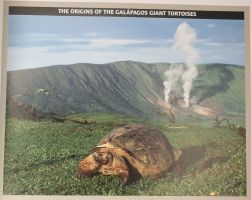

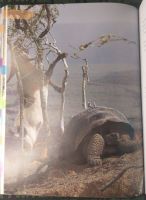
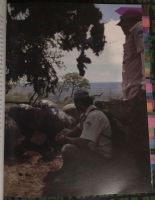
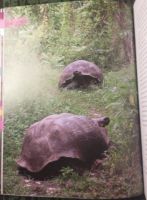

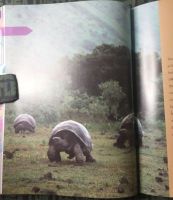
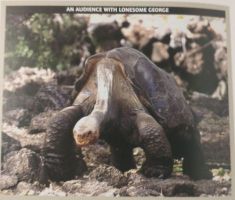
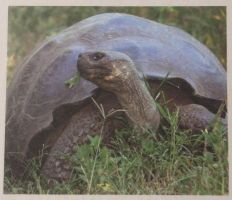
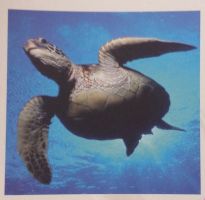

Autor: XYuriTT
 Tytuł: Nasza planeta
Tytuł: Nasza planeta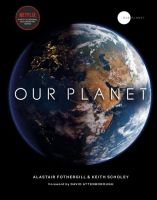
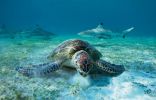

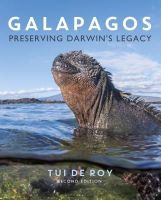
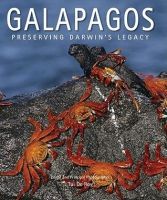
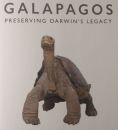
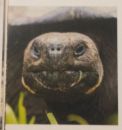
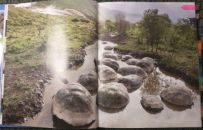
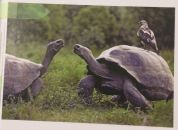
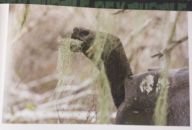
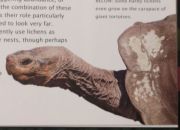
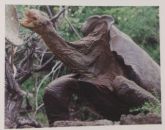
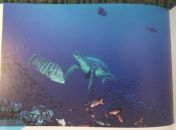
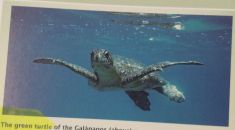
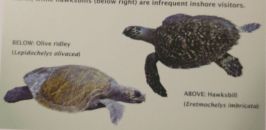
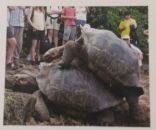
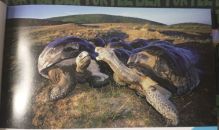
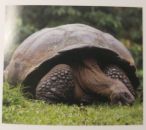
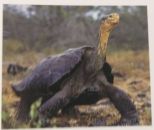
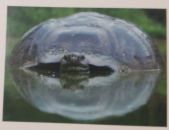


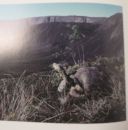
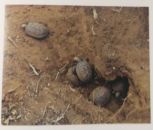
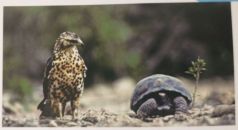
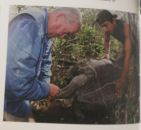
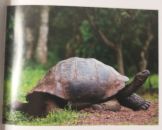
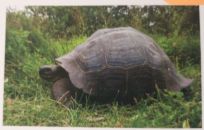
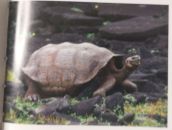
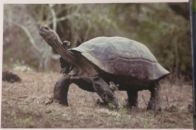
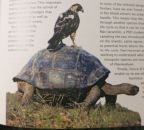
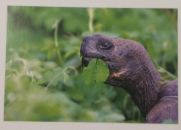
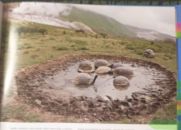
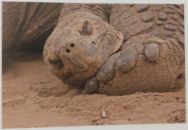
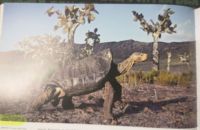
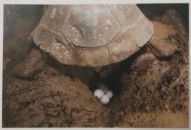
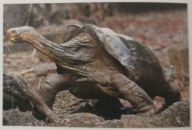
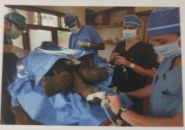
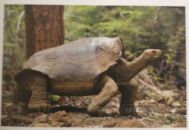
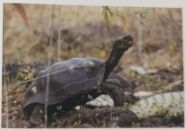
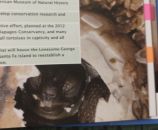
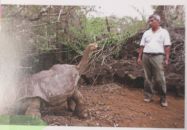
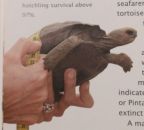
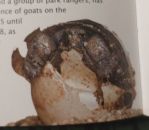

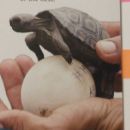
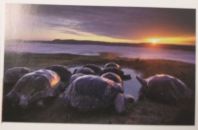
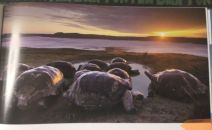

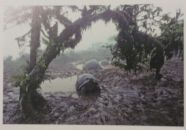
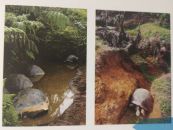
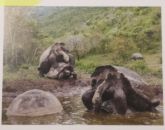
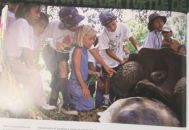
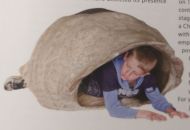


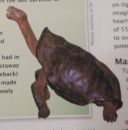
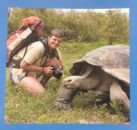
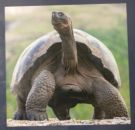












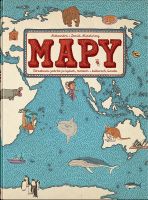
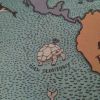
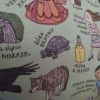
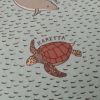
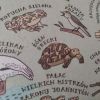
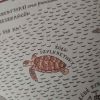
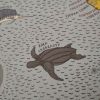
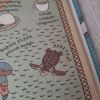
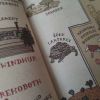
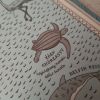
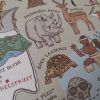
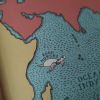
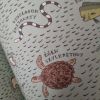
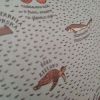
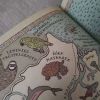
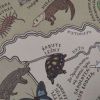
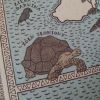
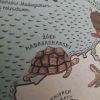
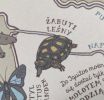
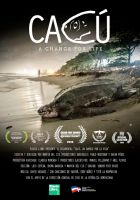 Tytuł: Cacú: un cambio por la vida
Tytuł: Cacú: un cambio por la vida
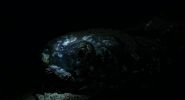
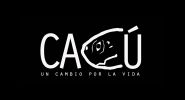
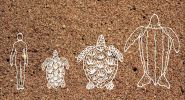
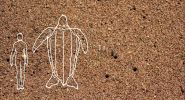

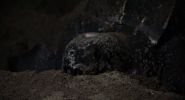
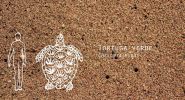
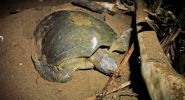
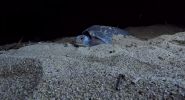
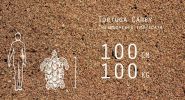
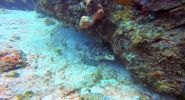


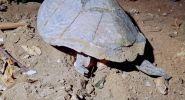
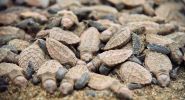


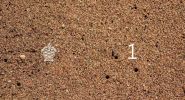
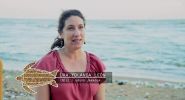
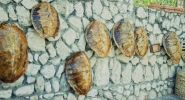

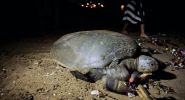
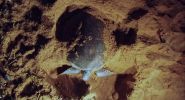

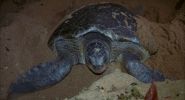

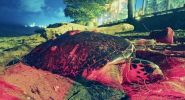
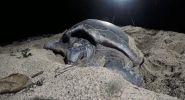
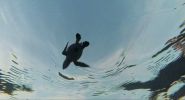
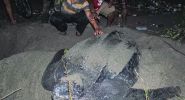
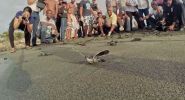

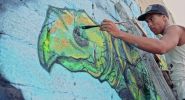



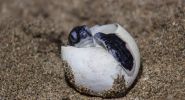
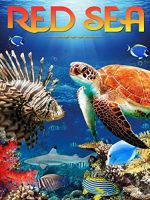 Tytuł: Red Sea
Tytuł: Red Sea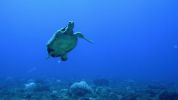

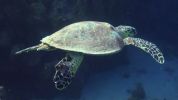
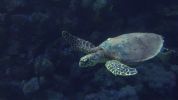
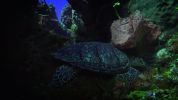

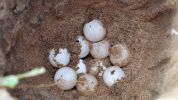
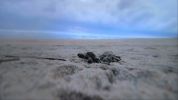
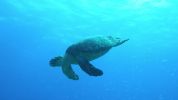
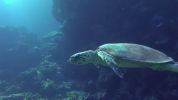
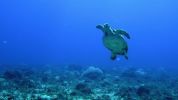
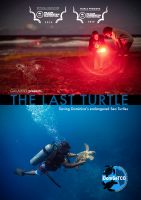 Tytuł: The Last Turtle
Tytuł: The Last Turtle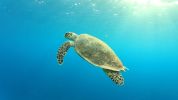
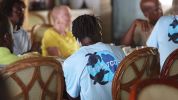

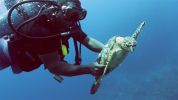
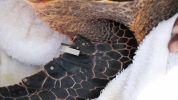
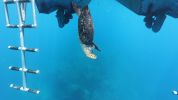
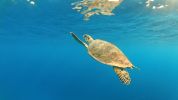
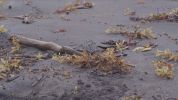

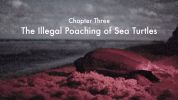
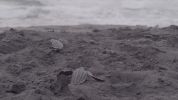
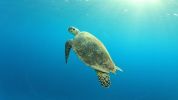

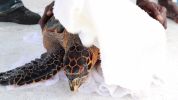
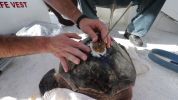
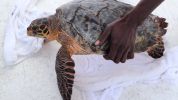

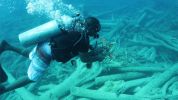

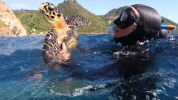
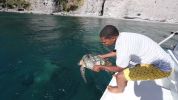
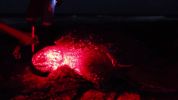


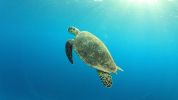
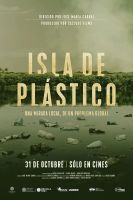 Tytuł: Isla de plástico
Tytuł: Isla de plástico

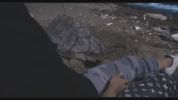
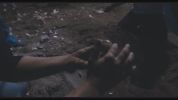
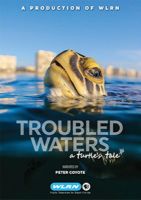 Tytuł: Troubled Waters: A Turtle’s Tale
Tytuł: Troubled Waters: A Turtle’s Tale

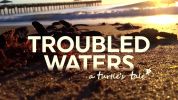
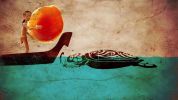
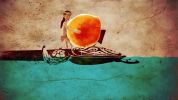

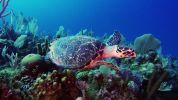

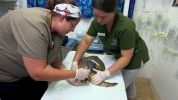
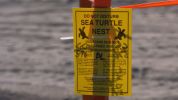
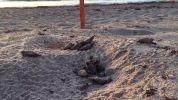
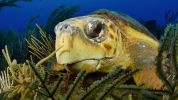
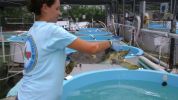
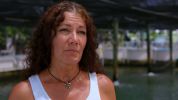

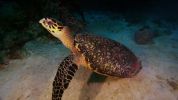
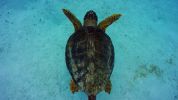
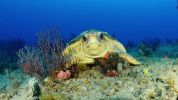
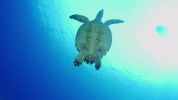

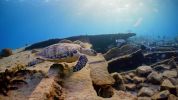
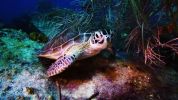
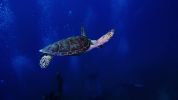

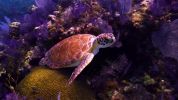
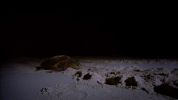

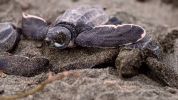
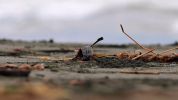
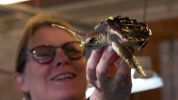
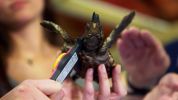
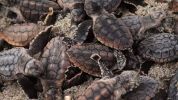
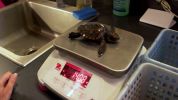
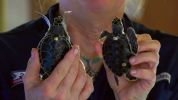
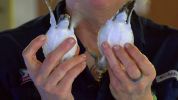
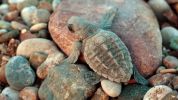
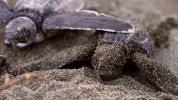
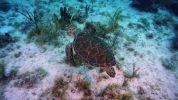
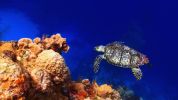
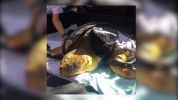
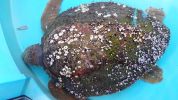
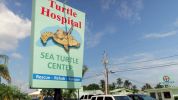
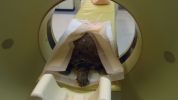
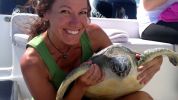

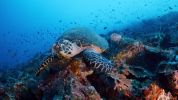
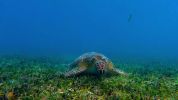

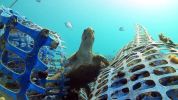
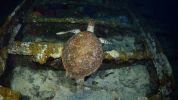
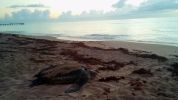

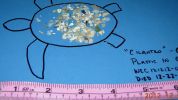
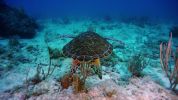

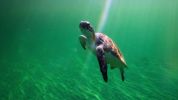
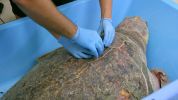
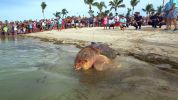
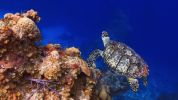
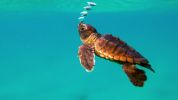
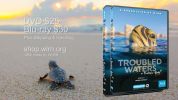
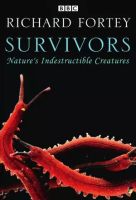 Tytuł: Survivors: Nature’s Indestructible Creatures
Tytuł: Survivors: Nature’s Indestructible Creatures
